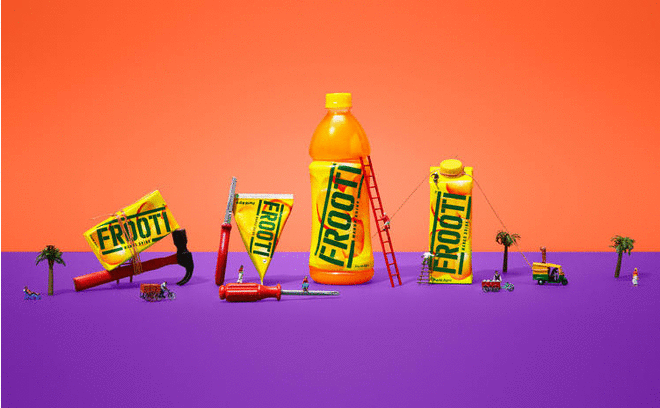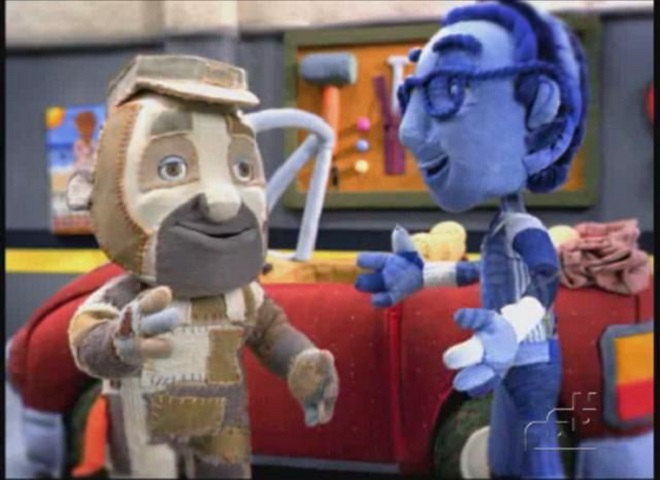Advertising is a very important business spend for brands to stay relevant in this competitive market space. What is a brand, one may ask… Well it’s a name, term, design or other feature that differentiates one seller’s product from others, and one of the most important aspects of a brand is its recall value.
When you hear the word ‘ZooZoo’ one immediately associates it with the brand Vodafone. That is the power of a well executed advertising strategy and the usage of a distinct looking creature like ZooZoo attracted the right quotient of curiosity towards the brand.
In this age of cut-throat competition it is really important for a brand to think out-of-the-box to establish their product/brand in the market. The traditional method of bringing credibility to a brand was to get popular celebrities to endorse the product, but now there is a change in the way things function (well only amongst brands that believe in their product that is). Brands have started experimenting in their advertising techniques by using the animation artistry in their campaigns.
Brands like Amul, Clinic Plus, Appy Fizz, Mortein have been successful in using this method of visual communication for their respective brand messaging. By using animated characters, they set themselves apart from other brands. According to a few case studies, people preferred watching a Red Bull advertisement as opposed to that of a Fair and Lovely, given that the latter was trying to put across forced messaging as opposed to Red Bull.
A study also found that an actor who endorses two or more products doesn’t gain the trust of potential consumers as against any animated character that is exclusively associated with the brand in question. Using animation is also economical for the agency appointed to create the brand campaign, as it then has the freedom of bringing out the communication in a manner that can be altered to suit the client’s need.
With the advancement in the animation industry, we can see more animated ads coming in. These ads are something which the audience would recall even after ages. We have listed down some of the animated ads which have been talked about and are still loved by people, even today.

Amul Girl: Amul girl has been the face of Amul, one of the biggest players in the dairy industry in India, since 1967. The half-tied blue hair girl who wears polka dot frock was created by Eustace Fernandes. Since then she has ruled the hearts of the nation and we can still see her hoardings taking potshots at current occurrences which are the topic of discussion in the country.

Frooti: The recent Frooti ad starring Shah Rukh Khan and many small animated humans created quite a stir for its controversial yet catchy lyrics ‘Suck it, Lick it’. Frooti rebranded itself by advertising differently by using animation technique in the campaign.

Comfort Cloth World: A UK based, Unilever product, Comfort which is a fabric softener came out with an ad featuring Clothworld, wherein the world is made up of clothes. The recently launched ad in India was created by Unilever and Ogilvy and Mather back in 2000.

ZooZoo: ZooZoo, the white ballooned body with egg shaped head character was used for promotion by Vodafone India during the initial years of the Indian Premiere League. For the audience the characters look animated though in reality, there are humans beneath the costume. The idea of ZooZoo was conceived by Rajiv Rao and was created by Ogilvy and Mather.

Chulbuli: Chulbuli was the mischievous girl who always used to return home with messed up, dirt-filled hair and promote Clinic Plus shampoo. She was produced at Vaibhav Studio whose works also include Channel V’s Simpoo character.

Red Bull: The tagline ‘Red Bull gives you Wings’ has been beautifully conveyed in the ad using animated characters by Kastner & Partners, Red Bull’s official international ad agency network. It was a fresh concept which has a humorous element added to it thereby attracting attention.

Pillsbury Dough: Many of us associate Pillsbury with its mascot “Poppin’ Fresh” who’s a cute chef made up of dough with blue eyes and a scarf tied around his neck. The mascot is commonly known as Pillsbury Dough and was created by Rudy Perz back in 1965 using a blend of stop-motion clay animation technique.

Mortein Mosquito: Louie, the badass filthy mosquito who likes to spread diseases was created back in 1957 by Bryce Courtenay. The character could be seen in ads along with his friends trying to terrorize homes but in the end getting killed by Mortein.

Appy Fizz: ‘A cool drink to hangout with’ the tagline is as cool as the character. The ad features Appy Fizz’s animated life size bottle which has a witty take on everything. Life was given to this character by Creativeland Asia.

Big Babol: Big Babol came up with an animated ad in which a bird adopted a turtle. The role of Big Babol comes in during the flying sessions of the baby birds wherein the tortoise with the help of Babol joins the flying team. This feel good ad was created by McCann Erickson agency.

Amaron: In the famous Amaron ads, claymation technique was used for the very first time in Indian advertising market. This innovative ad was produced by E Suresh in 2002 and had bagged many awards along the way. Its jingle ‘Last longs, really long’ still rings quite a few bells among people who remember this very differentiated campaign and ahead of its times brand communication.

ICICI Chintamani: This was another lovely brand campaign carried out by E Suresh for ICICI Prudential Life Insurance, where the character of Chintamani signifies the plight of the common man on his various worries about savings and future sustenance planning can be taken care by ICICI. The technique of stop-motion, claymation has been used for the campaign.

Duracell Battery: The Duracell battery ad features battery run pink bunnies which try to outdo each other but in the end the Duracell battery bunny wins the competition. The Duracell bunny which was launched in 1973 no longer appears in the Duracell ads.
In this aggressive market scenario where brands want the consumer to easily distinguish their products from their rival companies, we can expect to see a growth in the usage of animation/CGI effects in the advertising industry as this is the right time to tap in and explore the graphic market industry.
